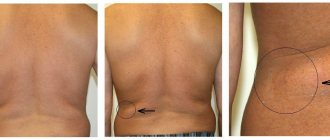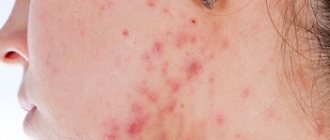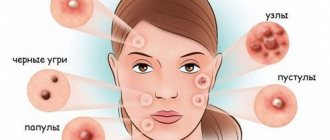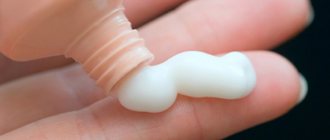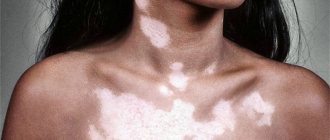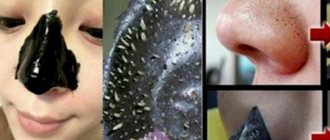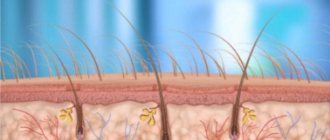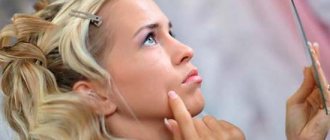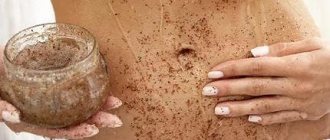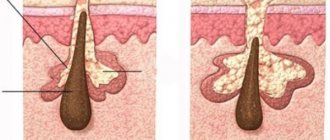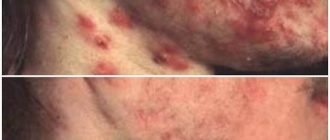What it is
A small pimple acquires a white color due to the fact that its contents – fat or pus – are visible under a thin layer of the epidermis. Accordingly, these are three completely different types of rashes:
- Comedones. These are small subcutaneous formations. They consist of hardened fat accumulated in the pores, dead skin cells, tiny particles of dust and dirt. Outwardly they resemble a dense small white ball, they usually do not become inflamed or painful. Prosyanka is what people call such hard rashes.
- Acne. With excessive sebum secretion, the pores do not have time to cleanse themselves and become clogged. Dense fat plugs form on their surface. When exposed to air, they oxidize and turn into black dots. If pathogenic microorganisms get inside, under certain conditions, inflammatory processes may begin and acne may appear.
- Pustules. Already filled with whitish-yellow purulent contents, pimples form in the pores, which also contain hair follicles. If left untreated, the papular-pustular form of acne, which I described in detail in another article, goes into a more severe stage with the formation of cysts and deep boils.
The appearance of small white pimples on the face of a newborn baby is hormonal in nature. In this way, the baby reacts to the mother’s skin flora. The likelihood of rashes increases if a woman had acne during pregnancy.
Types of whiteheads and their differences
Closed and open comedones
Comedones are a type of so-called cyst. They appear due to contamination of the skin pores with fat and dirt through which it breathes. Comedones look like blackheads or a white pimple. Those comedones that look like blackheads are called open comedones , as they have turned black due to the partial release of their contents.
If the ducts and pores are contaminated with sebum, then they look like a small white pimple and are called closed, causing more trouble than open ones.
Closed comedones become inflamed, cause pain, suppuration , increase in size up to 5 mm, and form nodes and papules. Such acne can appear in both women and men.
Before you start treating your facial skin, it is important to know the cause of inflammation.
Children of adolescence are especially affected during puberty and increased activity of the sebaceous glands. This phenomenon is also observed in pregnant women during menopause.
Note! Comedones are a minor cosmetic skin problem, but when inflamed, they can develop into a medical problem.
Main reasons
In any case, white pimples are a consequence of disruption of the normal functioning of the sebaceous glands and the accumulation of excess sebum in the ducts. Their activity is influenced by various external and internal factors. Therefore, the causes of rashes can be:
- unbalanced diet;
- bad habits: smoking and alcohol;
- colds and ARVI;
- taking certain medications (oral contraceptives, testosterone propionate, etc.);
- diseases of the endocrine system and/or gastrointestinal tract;
- natural fluctuations in hormonal levels (adolescence, pregnancy, premenopause);
- liver and kidney problems;
- skin parasites;
- hyper- or hypovitaminosis;
- severe or prolonged stress;
- a sharp decrease in immunity.
On the face of men, papules can appear due to small cuts during shaving that become infected. A common reason for the formation of comedones in women is the use of low-quality cosmetics, especially foundation creams with a prolonged effect or silicone makeup bases.
Acne on the body - the causes of what disease?
It is not always possible to determine why acne appears on the body through visual inspection alone. In many cases, this requires additional research, which includes:
- general blood and urine analysis;
- blood chemistry;
- blood test for sex hormones, thyroid hormones;
- ultrasound examination of the digestive organs;
- throat swab analysis;
- allergy tests, etc.
Common culprits of body acne include:
- changes in hormonal levels;
- disorders of digestive and metabolic processes;
- psychological and neurological problems;
- allergens;
- lack of proper hygiene;
- wearing low-quality synthetic clothing;
- infections.
Acne all over the body - causes
A rash in adults, distributed over the entire surface of the body, can indicate both infectious and non-infectious pathologies: allergies, blood and vascular diseases, acute and chronic infectious diseases transmitted by contact, airborne droplets, and sexual contact. Pathologies provoked by microorganisms (bacteria, viruses, fungi) are in many cases indicated by general intoxication symptoms: increased body temperature, weakness, headache, nausea.
Some people experience so-called cold pimples on the body - inflammatory bright red painful rashes affecting different areas of the body, associated with hypothermia of the body, decreased immune defense in the autumn-winter period. Athletes who take cold showers after intense training are prone to the appearance of such pimples.
Acne on legs
If the rash is localized on the lower extremities, the probable cause may be associated with allergic manifestations. Using low-quality washing powder, wearing nylon tights, or depilatory products can provoke an inadequate reaction. Often, acne on women's legs occurs when the skin is injured during shaving or due to ingrown hairs. If rashes are present on the feet, in the interdigital areas, this may indicate dyshidrosis or a fungal infection.
Pimples on hands
In people with sensitive skin, allergies in the form of acne on the body, especially on the upper extremities, are a common occurrence. In most cases, this is caused by contact with household chemicals, certain metals, and is provoked by exposure to low temperatures and dry air. The localization of the rash on the palms is characteristic of syphilis, on the hands and between the fingers - for eczema (multiple rashes tend to merge).
Acne on the stomach
If acne on the body itches, focusing in the abdominal area, this may be a manifestation of scabies, dermatosis, psoriasis, or herpes virus infection. Also, such pimples often indicate allergic dermatitis caused by the influence of foods, medications, and external irritants. In people who are prone to obesity, pimples on the stomach often appear in the hot season due to excessive sweating under tight clothing.
Acne on chest and back
In the upper part of the body, so-called hormonal acne can be localized - acne associated with an imbalance of sex hormones in the body. Some women are prone to such rashes almost throughout their lives, with exacerbations associated with the menstrual cycle. Similar formations in the back and chest area are possible with hypothermia, herpes zoster, and psoriasis.
How to get rid
Finding ways to get rid of blackheads and white pimples on the face must begin with finding out the cause of their appearance. First of all, it is necessary to eliminate all external provoking factors. For many people, their skin condition improves significantly after this.
Then you can use pharmaceutical drugs or folk remedies. If they do not help restore the epidermis, you will have to go to the doctor. Perhaps the culprits of the rashes are pathological processes or hormonal disorders. In this case, you cannot do without qualified help.
Manual cleaning
Single acne and comedones can be removed quite easily with proper manual cleaning. This is not a banal squeezing them out with your hands, as many people think. The professional procedure consists of several stages, the first and most important of which is thorough preparation of the skin. It is steamed or heated using a thermal mask.
Most blackheads come to the surface easily after this. And comedones have to be carefully pierced with a sterile needle and their contents carefully removed. At the end of the procedure, the cosmetologist carefully treats the skin with an antiseptic and makes a mask that closes the pores or uses Darsonval.
Hardware methods
If you have multiple white pimples on your face, one of the following hardware procedures can be an excellent way to remove them:
| Procedure | Description |
| Electrocoagulation | This is cauterization of problem areas using direct electric current. It effectively removes pustules without the risk of spreading their purulent contents over large areas of the skin. |
| Ultrasonic cleaning | It cleanses the face well of comedones and deep blackheads, as it promotes loosening and exfoliation of the upper layer of the epidermis, as well as removing sebaceous plugs. The procedure is painless and has a minimum of contraindications. |
| Vacuum cleaning | In fact, it involves pulling out the contents of acne using a head, under which negative air pressure is formed. If the suction power is set incorrectly, bruises may remain on the face after the procedure. Not used to remove ulcers. |
| Galvanic cleaning | Under the influence of electromagnetic radiation, even very dense sebaceous plugs are effectively melted, after which the contents of the pores easily come out. Can be used before manual cleaning. |
| Keratolytics | Chemical compounds capable of breaking down sebum containing citric, salicylic, lactic or boric acid, etc. They facilitate the removal of acne and comedones, reduce the activity of the sebaceous glands, and tighten enlarged pores. |
Most often, to radically solve the problem, one session is not enough; you have to undergo a course of treatment of at least 3-5 procedures.
Pharmacy drugs
The effectiveness of using pharmaceutical drugs depends on the cause of acne formation. If they are hormonal in nature, then most of them will not work or will give only temporary results until the background is properly corrected and/or the functioning of the endocrine system is adjusted.
The same happens when the rash appears against the background of an exacerbation of systemic or chronic diseases or a sharp drop in immunity. Therefore, it is still advisable to use medications only after consulting a doctor. Sometimes, to select the most effective means, you even have to undergo a series of tests.
The following have a good anti-inflammatory and drying effect: retinoic, ichthyol, zinc, salicylic, heparin ointments; gels “Curiosin”, “Klindovit”, “Zinerit”, “Differin”, etc. To cauterize single pimples and small areas of skin, you can buy alcohol tinctures of calendula, St. John's wort or propolis.
Folk remedies
Time-tested folk remedies help get rid of white pimples and comedones of a non-pathological and non-hormonal nature quite well:
- Steam baths. Steaming the face over decoctions of medicinal herbs (chamomile, calendula, coltsfoot, sage, celandine) or soda solution. For the procedure, you can use a plastic container with a mask, which is sold in any pharmacy, or hold your head covered with a towel over a regular bowl. After this, the sebaceous plugs soften, swell, rise above the surface of the skin and are easily removed with a cotton pad soaked in lotion or hydrogen peroxide.
- Potato juice. Freshly squeezed juice from regular potatoes works great against acne and comedones. It also has an anti-edematous and mild whitening effect. You can wipe your face with it 2-3 times a day immediately after washing.
- Compresses. Suitable from herbal decoctions, green tea or soda solution. They saturate the skin with vitamins and microelements, soften sebaceous plugs, have an anti-inflammatory effect, and create unfavorable conditions for the proliferation of pathogenic microorganisms. A gauze pad soaked in the solution, folded in several layers, is applied to the entire face or only to the affected areas of the skin for 20-30 minutes.
- Masks. The following main ingredients of masks help to get rid of white pimples best: cosmetic clay, lemon, egg white, starch, fresh vegetables and fruits, honey, garlic, rice flour, oatmeal, hydrogen peroxide. You can find many useful recipes in other articles on our website. They should be done for at least a month, 2-3 times a week.
- Peels. Soda, salt or coffee peeling loosens the top layer of the epidermis, helps soften and remove sebaceous plugs and comedones. They can be performed 1-2 times a week, but only on non-inflamed skin. For dry and sensitive skin, it is advisable to purchase a soft enzyme peel and use it once every 7-10 days.
It is not advisable to use folk remedies for multiple purulent rashes, or it should be done with caution so as not to spread the infection throughout the face.
What milia look like on the face
White subcutaneous pimples on the face disrupt the cleanliness and well-groomed appearance of the skin. Milia are yellow or white bubbles with clear boundaries and sizes 0.5–3 mm. Dense pimples rise above the surface of the skin, are localized under the eyes, on the eyelids, cheekbones, forehead, lips, chin, and nose. Millet appears not only on the face, less often - on other parts of the body.
Preventing rashes
In most cases, the appearance of white pimples on the face can be prevented by simply following simple preventive measures:
- exclude unhealthy foods from the diet: snacks from bags, fatty, sweet, very salty and spicy foods, canned food, fast food and semi-finished products;
- give up bad habits or reduce the amount of alcohol and cigarettes as much as possible;
- observe the drinking regime - at least 1.5 liters of clean non-carbonated water should enter the body;
- regularly cleanse and properly care for your skin;
- use only high-quality cosmetics and do not overuse decorative ones;
- do not constantly use alcohol-containing masks and lotions, products with triclosan;
- Be careful when shaving, immediately treat wounds with an antiseptic;
- in areas where depilation is often performed, use products that prevent ingrown hairs;
- The menu should regularly include fish and seafood, fresh fruits and vegetables, herbs, and fiber-rich foods.
In the warm season, the skin must be cleansed more often and more thoroughly, as the process of sebum secretion intensifies. The easiest way to do this at home is with the help of proven folk remedies - soda peelings, clay masks, etc.
If you cannot cope with whiteheads on your own, you should not squeeze them out under any circumstances. It's better to go to a salon and have it professionally cleaned.
Summing up
As you can see, you can remove non-hormonal whiteheads under the skin on your face using folk methods quite quickly. And then all that remains is to maintain the skin in good condition. But if rashes are a signal of serious problems in the body, therapy should begin from the inside, not from the outside. If left untreated, inflamed white pimples can form large, painful bumps, wen, and boils, often leaving scars and blemishes on the skin.
What are your ways to deal with unpleasant rashes? You may want to share your methods, original recipes and reviews of salon procedures in the comments. This will be useful and interesting for other site visitors.
Measures to prevent the appearance of white pimples:
The question that worries each of us: what to do to prevent white pimples from appearing on the face under the skin? Prevention measures are as follows:
- Daily skin care morning and evening: washing without soap using a special gel or lotion, toning and applying cream. In addition, twice a week it is necessary to perform deep cleaning, exfoliating dead cells. Before the peeling procedure, you should steam your face. This will allow the pores to open, the skin to soften, and it will become easier to fight white pimples.
Attention: if purulent pimples appear on the skin, it is not recommended to scrub them, so as not to spread the source of infection to other, healthy areas of the skin.
- Use moisturizers regardless of skin type. In winter, it is recommended to moisturize your skin at night or at least an hour before going outside.
